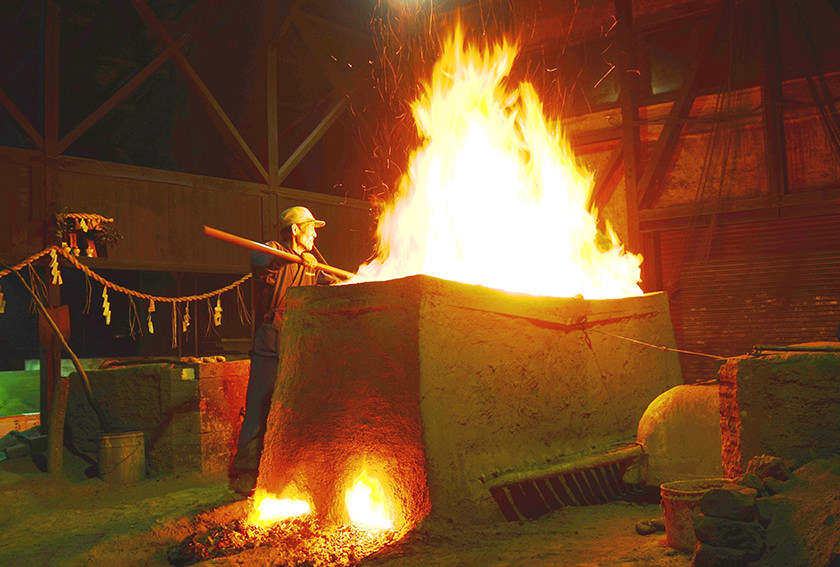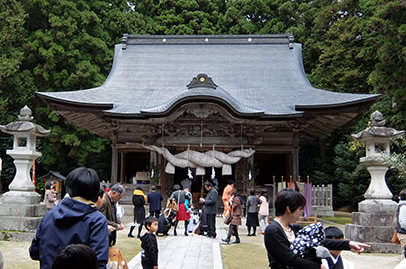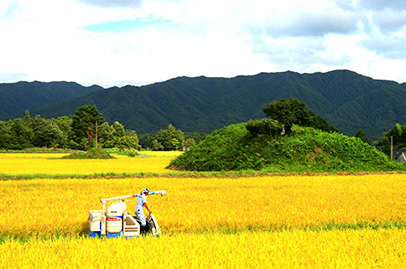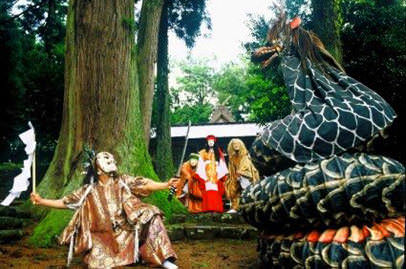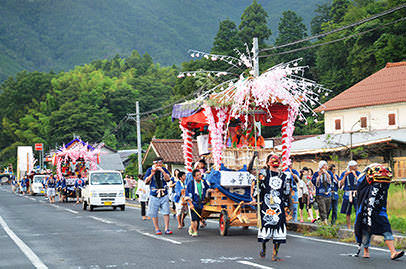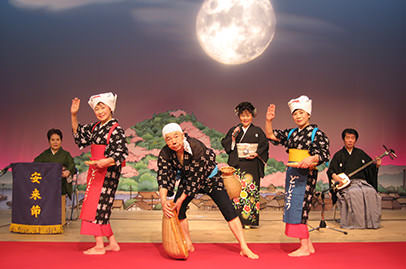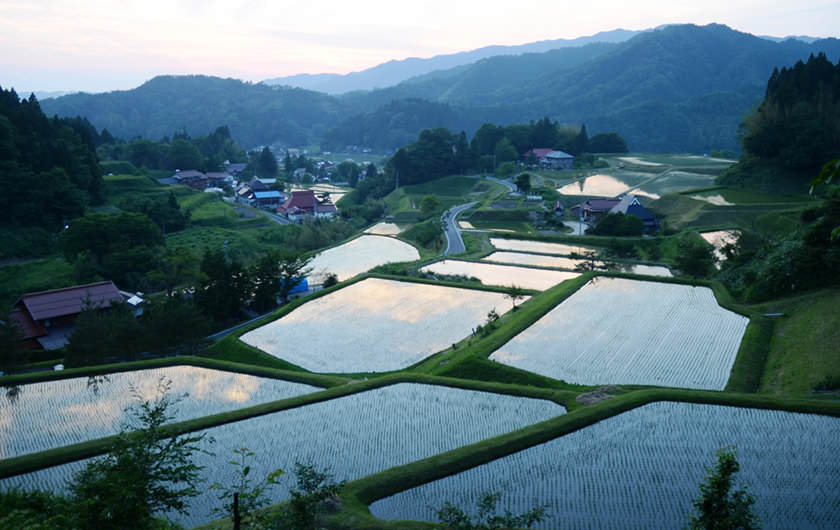The Beginning of Tatara Ironworks
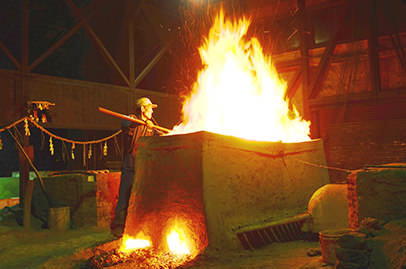
-
Over 1400 years ago in the Izumo region of eastern Shimane, a process of making iron from iron sand and charcoal called“ tatara” thrived.
In particular, the large forests around Okuizumo provided high – quality iron sand and charcoal fuel which attracted skilled iron makers.
Tatara and the Environment
-
Miners chipped away at mountains to gather iron sand. This land was then reused as rice fields. Water channels that were used to filter the iron sand are now used for agricultural irrigation. You can see the result at the terraced rice fields of Okuizumo.
Iron sand and charcoal (used for fuel) were amassed at the ironworks in a village called “Sannai,” meaning “in the mountains.” It was a small mining town consisting of 100 to 200 miners and iron makers. Sugaya Tatara Ironworks in Yoshida in Unnan is the only such town remaining where workers lived at the time.
-
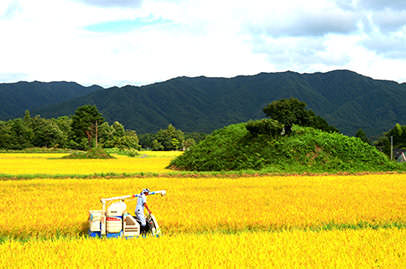
Small hills among the rice fields were purposely left as burial or religious sites. -
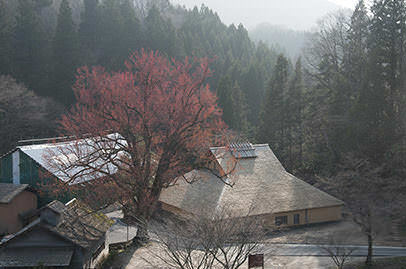
Sugaya Tatara Sannai
Tatara Ironworks Created New Culture and Industry
-
People from all over the country gathered in the region due to the iron trade, and they brought their culture with them.
The port area of Yasugi, where finished iron was sent to be shipped, became a major point of exchange between people. Influence from various folk songs created “Yasugi-bushi,” a folk song combined with dance. In Okuizumo, the Ōro-Atago Bayashi Festival, still held to this day, mimics the famous Gion Festival from Kyoto.
Luxurious tearooms and gardens can still be found in the old homes of iron makers who built their fortunes through the iron trade. Tatara iron making was not just the simple act of producing iron; it led to the creation of refined culture even while supporting the development of regional industry.
Tatara Ironworks and Sustainability
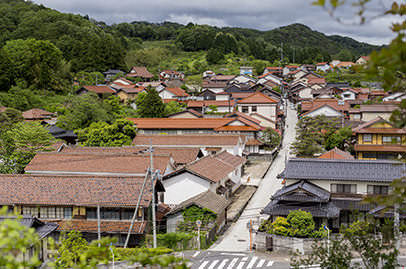
-
The tatara ironworks in Sannai closed its doors close to 100 years ago, but the technology and skill acquired through it are still transmitted in the Chugoku region to this day. Yasugi has developed into the foremost producer of steel in the country, and high-quality Yasuki Specialty Steel (YSS), made using the principles passed down from the days of tatara iron, supports modern construction today. Additionally, Izumo Soba and Nita Rice, grown on the land leftover from mining iron sand, are famous countrywide and have garnered many fans.
Over the course of a thousand years our ancestors created a unique culture and industry. Their legacy, and the natural landscape that supported it, continue on to this day.
About the Agency for Cultural Affairs, Japan Heritage Sites
-
Our mission is to recognize the narratives based on unique regional histories and traditions as Japan Heritage, provide comprehensive support so that Japan’s tangible and intangible cultural properties may be preserved and maintained, and strategically promote these stories within Japan and abroad.
-
-April, 2016-
Iron Road Culture Promotion Conference
Website: https://tetsunomichi.gr.jp/
(Office: Okuizumo Town Office)
Tel: 0854-54-2524




